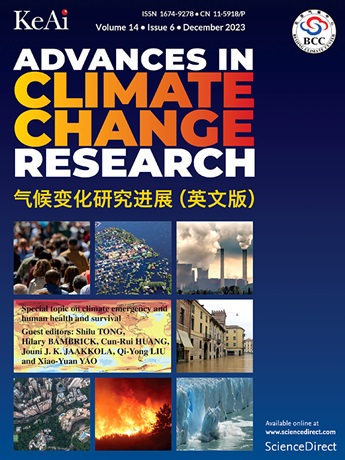中国CCER市场重启的综合效应评估——基于CGE和GAINS模型的耦合
IF 5.2
1区 地球科学
Q1 ENVIRONMENTAL SCIENCES
引用次数: 0
摘要
中国重新启动认证自愿减排(CCER)市场对碳排放交易市场的运作至关重要。传统的单一政策效果评价模型不能全面反映中国重启CCER市场所带来的经济和环境影响。为有效评估电力行业碳交易机制引入CCER的综合政策效果,有必要构建政策效果评价的耦合模型。因此,在中国重启CCER市场的背景下,利用中国2020年投入产出表,我们建立了一个综合评估模型。该模型将动态递归可计算一般均衡模型与温室气体与空气污染的相互作用和协同效应模型相结合,分析了在电力行业碳交易机制中引入CCERs对经济、能源、居民福利和环境健康的影响。结果表明,重新启动CCER市场导致碳配额价格与CCER价格之间的差距逐渐扩大。碳交易和CCER机制对能源消费总量增长的抑制作用较大,预计到2060年非化石能源占消费端的比重将超过80%。在居民福利方面,将CCERs引入碳交易机制并没有实质性地提高居民的福利水平,反而大幅降低了居民的碳排放水平。此外,本研究证实,重启CCER可以成功刺激污染物减排,有效降低可归因死亡人数,从而提高健康效益。我们还从碳排放补偿比例、人口消费结构、区域减排政策等方面为碳交易市场的重启提出了有针对性的建议,以促进碳交易市场的顺利运行。本文章由计算机程序翻译,如有差异,请以英文原文为准。
Assessing the combined effect of China's restarting of the CCER market: Coupling of CGE and GAINS models
China's relaunch of the Certified Voluntary Emission Reduction (CCER) market is essential to the operation of the carbon emission trading market. Traditional single policy effect evaluation models cannot comprehensively reflect the economic and environmental impacts brought about by China's restart of the CCER market. To effectively assess the comprehensive policy effects of introducing the CCER into the carbon trading mechanism in the power industry, it is necessary to construct a coupled model for policy effect evaluation. Therefore, against the backdrop of China's restart of the CCER market and utilizing China's 2020 input–output table, we have developed a comprehensive assessment model. This model couples a dynamic recursive computable general equilibrium model with a greenhouse gas and air pollution interactions and synergies model to analyze the effects of introducing CCERs into the carbon trading mechanism in the power industry on the economy, energy, residents' welfare, and environmental health. Results show that restarting the CCER market leads to a gradual increase in the gap between the price of carbon allowances and the price of CCERs. Carbon trading and the CCER mechanism exert a considerable inhibiting effect on the growth of total energy consumption, and the proportion of nonfossil energy on the consumption side is forecasted to exceed 80% by 2060. In terms of residents' welfare, the introduction of CCERs into the carbon trading mechanism does not substantially improve the welfare level of residents but drastically reduces the level of residents' carbon emissions. Furthermore, this study confirms that CCER restart can successfully stimulate pollutant emission reduction and effectively reduce the number of attributable deaths, which in turn enhances health benefits. We also provide targeted recommendations for the restart of the CCER market regarding the proportion of CCER offsets, the structure of population consumption, and regional emission reduction policies to help facilitate the smooth operation of the carbon trading market.
求助全文
通过发布文献求助,成功后即可免费获取论文全文。
去求助
来源期刊

Advances in Climate Change Research
Earth and Planetary Sciences-Atmospheric Science
CiteScore
9.80
自引率
4.10%
发文量
424
审稿时长
107 days
期刊介绍:
Advances in Climate Change Research publishes scientific research and analyses on climate change and the interactions of climate change with society. This journal encompasses basic science and economic, social, and policy research, including studies on mitigation and adaptation to climate change.
Advances in Climate Change Research attempts to promote research in climate change and provide an impetus for the application of research achievements in numerous aspects, such as socioeconomic sustainable development, responses to the adaptation and mitigation of climate change, diplomatic negotiations of climate and environment policies, and the protection and exploitation of natural resources.
 求助内容:
求助内容: 应助结果提醒方式:
应助结果提醒方式:


